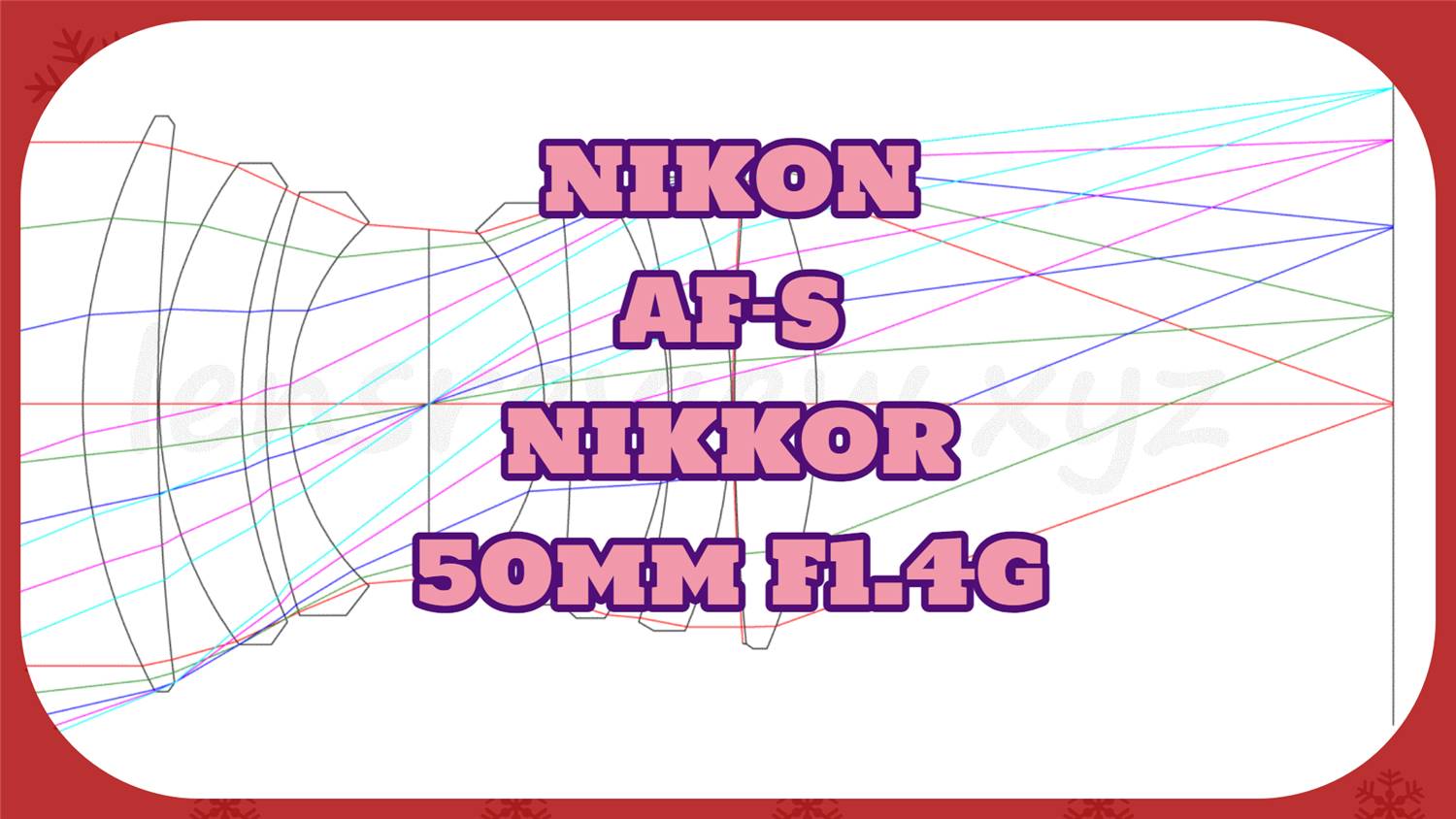This is a performance analysis and review article on the Nikon Nikkor 50 1.4G.
You hardly know how the lenses work, how their performance differs from each other, and the specific differences between them.
Even if you look it up in magazines or on the Internet, you probably only find similar "word-of-mouth recommendations" articles like that.
In this blog, while researching the history of lenses and their historical background, we estimate lens design performance based on patent information and actual shooting examples, and analyze lens performance in detail from a technical viewpoint through simulations.
Professional lens designer Jin Takayama will carefully unravel optical characteristics such as optical path diagrams and aberrations that are not generally visible, and explain the taste and descriptive performance of lenses in a deep and gentle manner.
Please enjoy the special information that you can read only on this blog in the world.
The original site has more articles.
https://lensreview.xyz/
Overview
In commemoration of the discovery of the NIKKOR Z 58mm f/0.95 S Noct patent documents, we have decided to proceed with a series of analyses of the NIKKOR 50mm.
In short, this is a project to enjoy the history of NIKON lenses on my own.
First of all, as of 2020, the following NIKON 50/58mm lenses are currently available.
- AI AF NIKKOR 50mm f/1.8D
- AF-S NIKKOR 50mm f/1.8G
- AI AF NIKKOR 50mm f/1.4D
- AF-S NIKKOR 50mm f/1.4G
- AF-S NIKKOR 58mm f/1.4G
- Ai NIKKOR 50mm f/1.2S
- NIKKOR Z 50mm f/1.8 S
- NIKKOR Z 58mm f/0.95 S Noct
Eight of them…that's a menace. And each of them seems to have a different optical system. It is understandable if the motors, drive mechanisms, electromagnetic aperture, etc. are different, but why bother to change even the optical system?
This is the fourth article in the series. In the previous article, we analyzed the 50mm f/1.4D, which was released more than 40 years ago in 1978 and whose optical system was diverted.
This time, we will analyze the f/1.4G released in 2008, which has been renewed over the past 30 years.
Private Memoirs
Around 2008, the condenser digital camera boom was at its peak, the APS-size SLR boom had arrived, and full-size cameras were in full swing.
At the end of 2007, the NIKON D3, the first full-size (FX format) NIKON lens, went on sale, and I think that this lens was the first full-size camera in the digital age.
Amazon Product Link
Click here to check prices
Document Survey
Again, unfortunately, we could not directly find any patents that seem to be design values for this lens.
However, we did find a patent application 2009-58651 filed by NIKON, which is similar in terms of application period and structure.
It is assumed that NIKON did not file a new patent application for this lens because the features of the product are contained in this patent.
For a Gaussian deformation type optical system such as a 50mm lens, if the configuration of the deformation part is similar, the performance should be very similar. Therefore, assuming that the design values are based on Example 1, which looks very similar, let us reproduce the design data as follows.
Notes!
The following design values have been selected and reproduced from the appropriate patent literature and do not correspond to the actual product. Naturally, the data is not guaranteed, and I am not responsible for any accidents or damages that may occur by using this data.
Analysis of Design Values
Optical Path Diagram
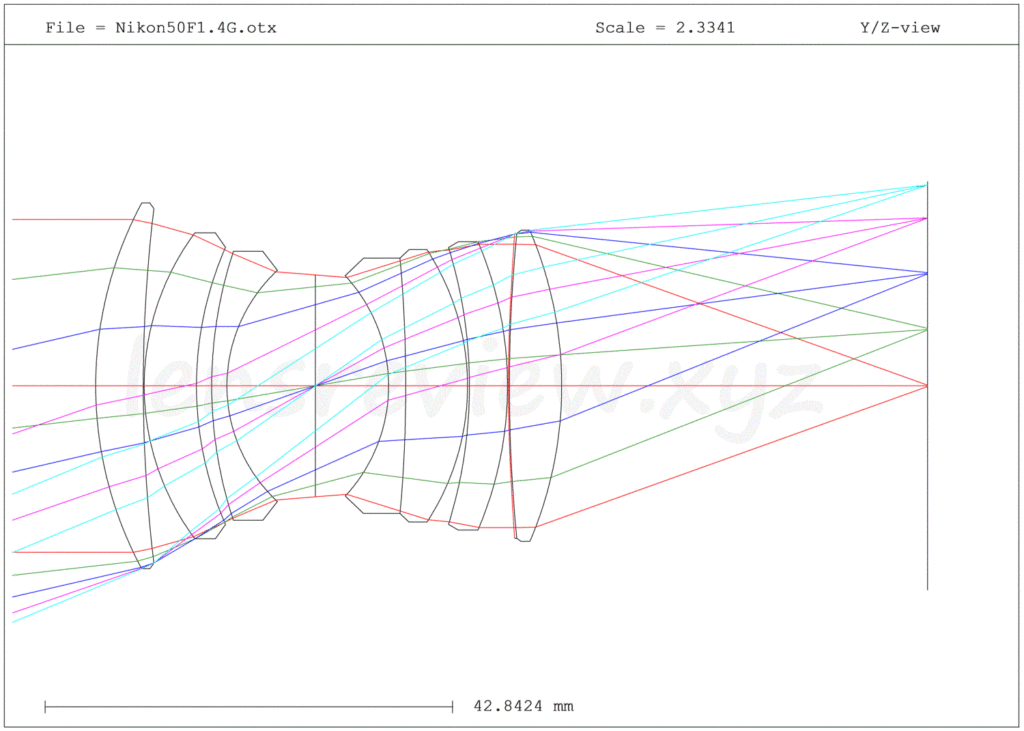
The above figure shows the optical path diagram of the NIKKOR 50 F1.4G.
It consists of 7 elements in 6 groups, with one additional convex lens on the image sensor side of the symmetrical Gaussian. The junction lens on the subject side is separated in order to suppress coma aberration.
An aspherical lens is used for the lens on the most image sensor side; it would be appropriate to describe it as adding an aspherical surface to the lens on the image sensor side of the f/1.4D.
There is nothing of note in the lens materials, but materials with a high refractive index typical of the modern era are used.
As explained at the beginning of this article, we could not find any patent documents that seem to be direct design values of this product.
The only visual difference between this product and the actual product is the position of the aspherical lens. In the product, the aspherical lens is the sixth lens, which is on the subject side of the figure.
It is unclear whether the position of the aspherical surface was changed during product design to achieve higher performance, to pursue ease of processing, or to avoid ghosting…etc.
Longitudinal Aberration
Spherical Aberration, Field Curvature, Distortion
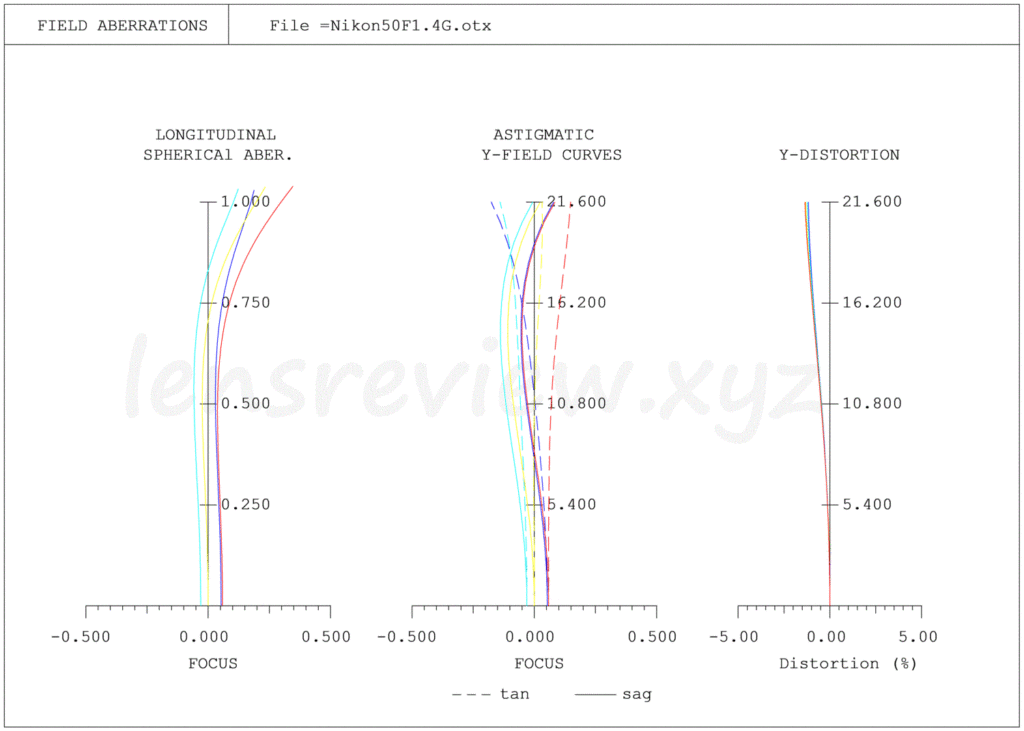
Spherical Aberration , Axial Chromatic Aberration
Looking at the spherical aberration, I thought there would be a surprising change since it is the first renewal in 30 years, but surprisingly, spherical aberration is not significantly different from that of the f/1.4D.
The same is true for axial chromatic aberration.
Field Curvature
field curvature is about f/1.4D.
Distortion
Distortion is slightly barrel shaped, but is characteristic of symmetrical Gaussian types and is in the small range in absolute value.
Lateral Chromatic Aberration
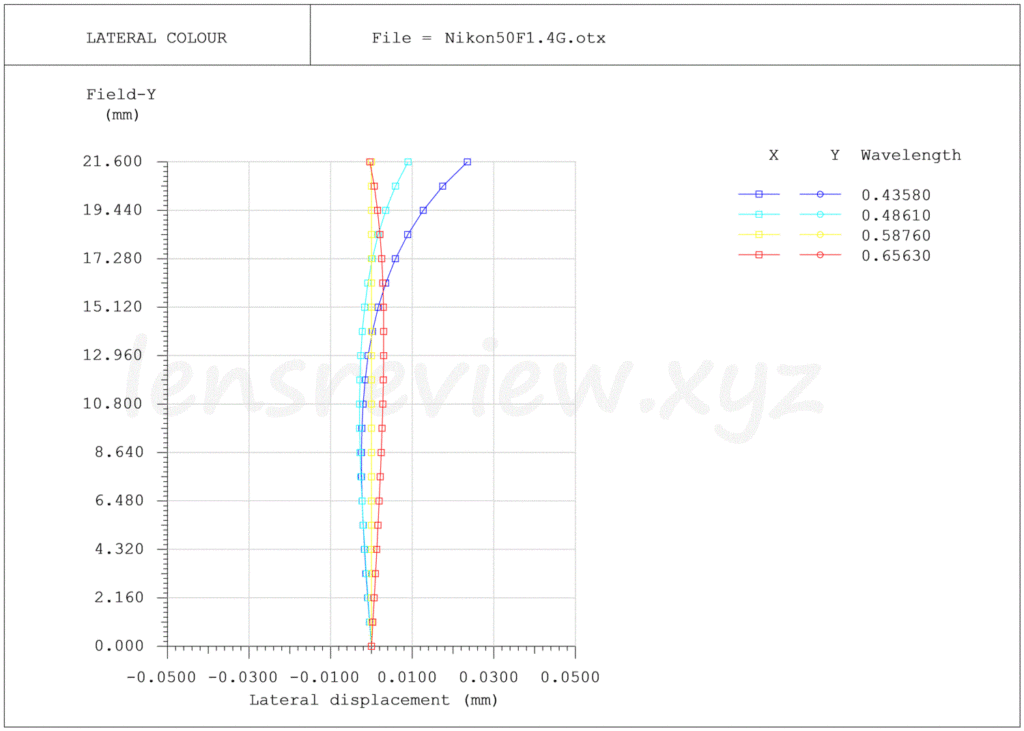
Similarly, the lateral chromatic aberrations is almost the same as that of f/1.4D. The absolute value of chromatic aberration is small, which is a feature of Gaussian-type lenses.
Transverse Aberrations
(Left)Tangential direction, (Right)Sagittal direction
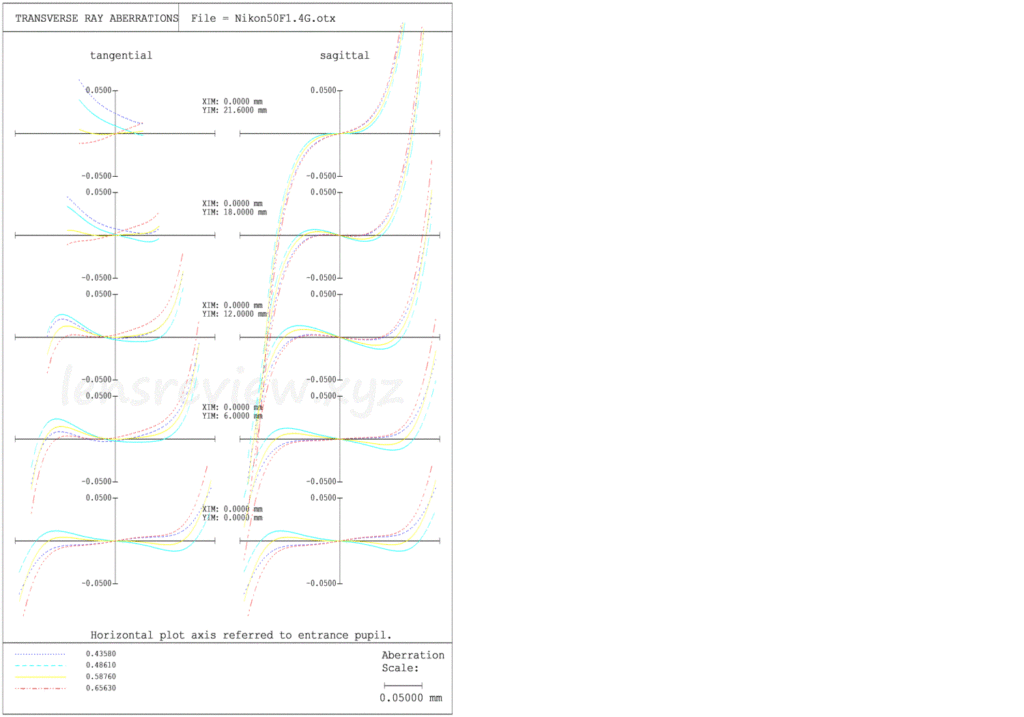
Let's look at it as a transverse aberrations.
The transverse aberrations shows a slight increase in sagittal flare compared to the f/1.4D…
Spot Diagram
Spot Scale 0.3 (Standard)
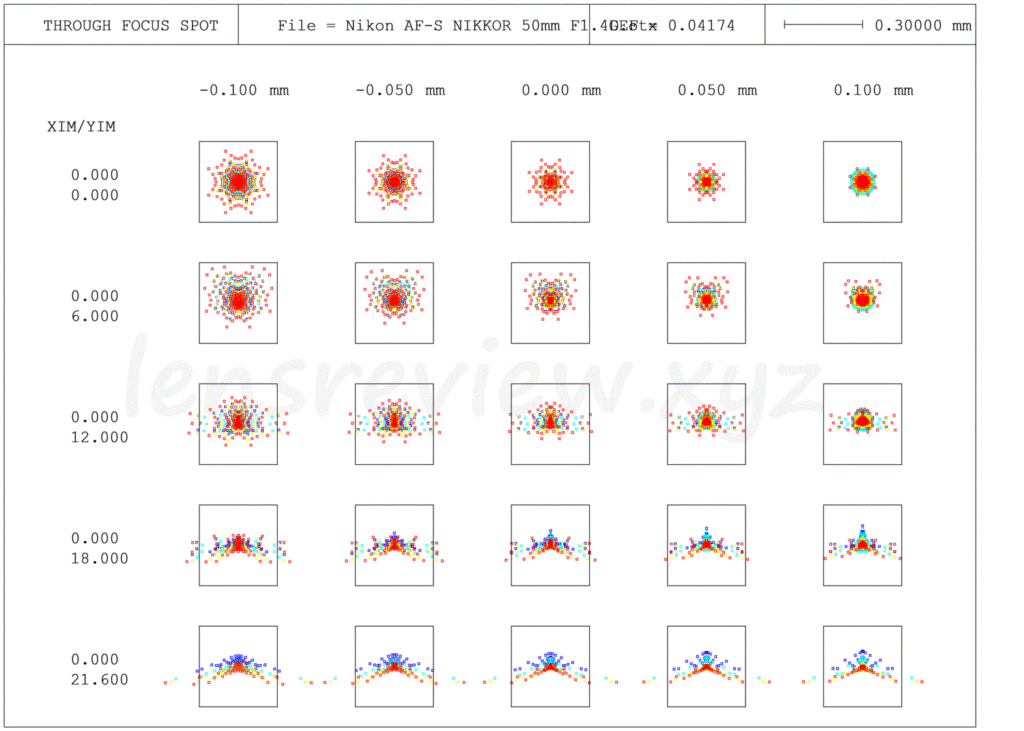
Here are the results of the optical simulation, but let's start with the spot diagram.
Spot Scale 0.1 (Detail)
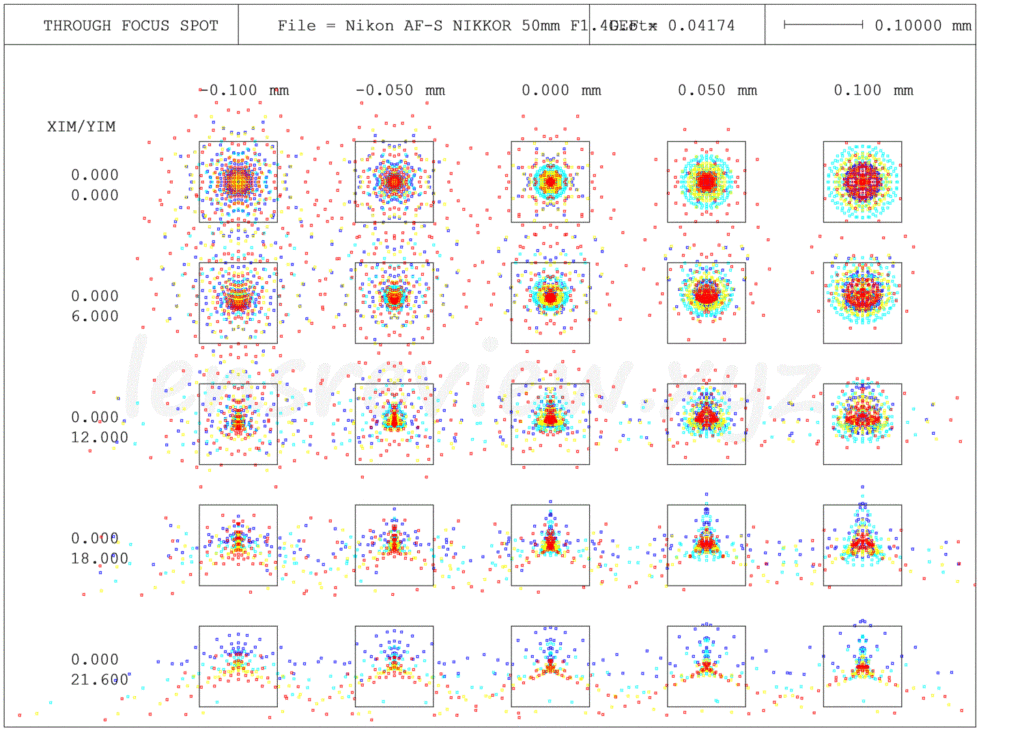
The spotting is not much different from the f/1.4D.
MTF
Maximum Aperture F1.4
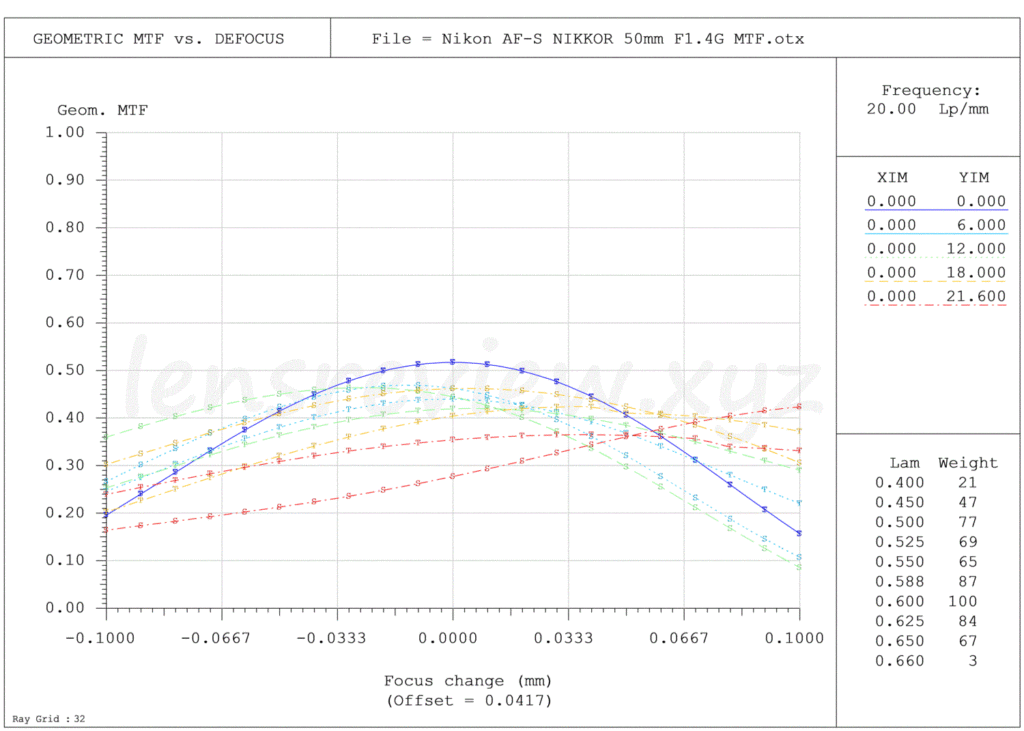
Finally, let's check the results of the simulation with MTF.
The face has changed slightly when viewed with the MTF at maximum aperture. The center of the screen has not changed much, but the field curvature has improved with high uniformity in the periphery.
The introduction of an aspherical lens has made advanced correction possible.
Small Aperture F4.0
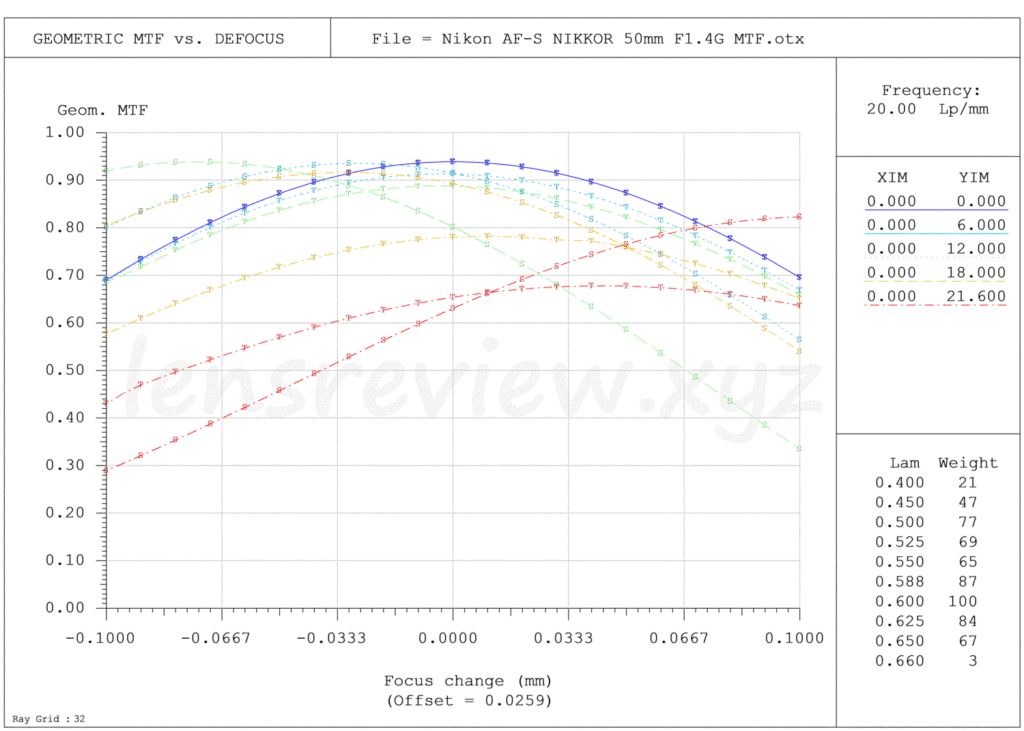
The difference between the f/1.4D and the f/1.4D is still small when you start to aperture the lens.
Conclusion
The only difference between the f/1.4D and the f/1.4D seemed to be the improvement in field curvature.
The MTF graph on the official website shows such a difference, so I do not think that my analysis is greatly mistaken.
However, I know that the patent data used to create this data is different from the product data, so please use it only as a reference.
When I saw the analysis data of the f/1.4D, I feared that this product might be the last of the good old Gaussian f/1.4 lenses. I feared that this might be the last of the good old Gaussian F1.4 lenses.
As represented by Sigma's Art series, the current boom in 50mm lenses is for higher performance, so I thought that if the lens became mirrorless, the significance of the Gaussian type would be lost, and the fluffy Gaussian type would be finished.
However, NIKON seems to have retained the traditional Gaussian flavor in the f/1.4G.
Now the question is, which one to buy? Although the f/1.4D is inexpensive, its autofocus mechanism is old, and it is practically a manual-only lens, so you may lose money in the long run.
If you buy the f/1.4G, you will still be able to enjoy the same "soft aberration taste" when shooting, and if you can autofocus, it will be very convenient, so it would be better to buy the f/1.4G.
Amazon Product Link
Click here to check prices
- AI AF NIKKOR 50mm f/1.8D
- AF-S NIKKOR 50mm f/1.8G
- AI AF NIKKOR 50mm f/1.4D
- AF-S NIKKOR 50mm f/1.4G
- AF-S NIKKOR 58mm f/1.4G
- Ai NIKKOR 50mm f/1.2S
- NIKKOR Z 50mm f/1.8 S
- NIKKOR Z 58mm f/0.95 S Noct
The original site has more articles.
https://lensreview.xyz/
Sample Picture
Example photos are in preparation.
If you are looking for analysis information on other lenses, please refer to the table of contents page here.
